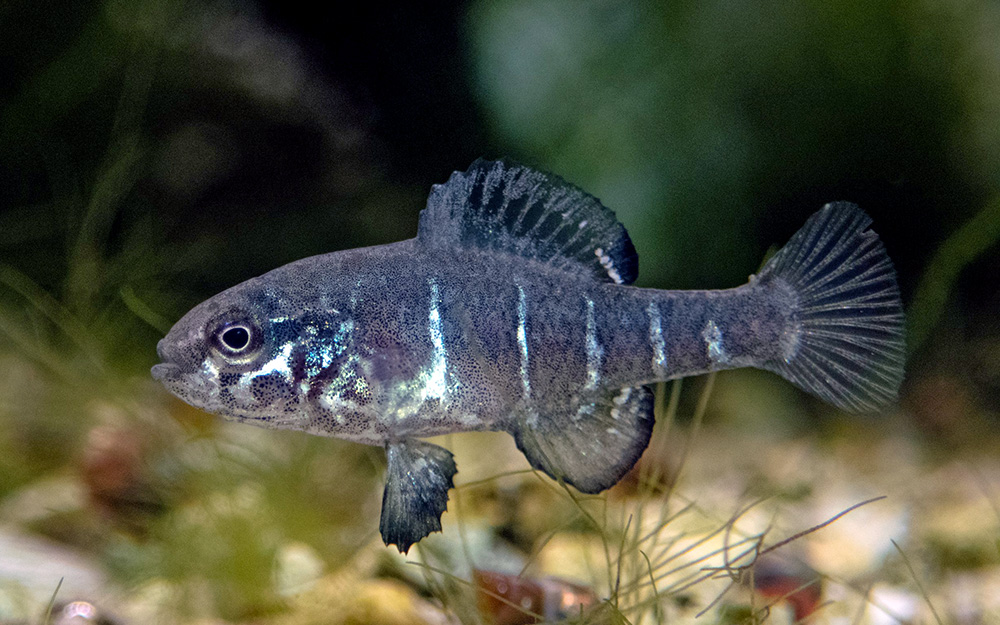Spring pygmy sunfish
(Elassoma alabamae)

Classification
General data
The spring pygmy sunfish, Elassoma alabamae, is a species of pygmy sunfish endemic to springs in northern Alabama. It was historically known to occur in springs in North Alabama along the Tennessee River in Limestone and Lauderdale counties. The spring pygmy sunfish was first discovered in Cave Spring in Lauderdale County, Alabama in 1937 but in 1938, this site was flooded by the creation of the Pickwick Reservoir. The spring pygmy sunfish was considered extinct until its rediscovery in the Beaverdam Spring complex in 1973 by researchers from the University of Tennessee.
Appearance
The spring pygmy sunfish a small fish that rarely exceeds an inch long. Males and females exhibit different coloration. Breeding males are vividly colored. Overall the breeding male is very dark except for vertical, iridescent blue-green bars along the body and iridescent mottling on the cheek. Females are more muted in coloration when compared to the males.
Habitat
The preferred habitat for the spring pygmy sunfish is spring water, and associated spring-fed wetlands. The species is most abundant at the spring head and spring pool area.
Diet
Diet likely consists of small aquatic invertebrates such as amphipods, isopods, and larvae of mayflies, caddisflies, and midges.
Historical range
Historically, this fish was known to occur at two other sites in northern Alabama, one in Limestone County and the other in Lauderdale County. The species decline has been attributed to water pollution, a reduction of water quantity and impoundments. It was listed as a threatened species under the Endangered Species Act in 2013.
Current range
Currently, the only spring-dwelling population occurs in Limestone County in the Beaverdam-Moss Spring/Swamp spring system, where it is threatened by the construction of an automobile plant, though a conservation agreement was reached between the manufacturers and the Center for Biological Diversity. The Beaverdam spring and creek complex was formerly thought to be the only remaining habitat of the species, but in 2015 another population was discovered in the Blackwell Swamp of Wheeler National Wildlife Refuge in Madison County.











